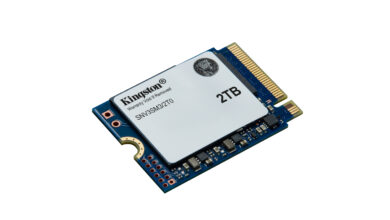
Panembra Tech: Strengthening India’s Connected Future with Indigenous Innovation and Secure Semiconductor Intelligence
As India accelerates toward a digitally empowered future, Panembra Tech is emerging as a pivotal force shaping the nation’s secure connectivity landscape. Led by Vivek Gupta, Director of Panembra Tech, the company is addressing long-standing industry gaps by developing homegrown semiconductor architectures, secure operating systems, and large-scale personalization capabilities. With rising concerns around SIM security, the rapid evolution of eSIM and IoT, and the need for sustainable hardware manufacturing, Panembra is redefining what it means to build technology “for India, within India.” Through deep R&D, vertical integration, and a strong focus on digital sovereignty, Panembra Tech is setting new benchmarks for trust, transparency, and secure digital infrastructure in the country.
1. Panembra is emerging as a key player in India’s semiconductor and smart card ecosystem. What gaps in the industry did you identify, and how is the company addressing them through indigenous innovation?
For many years, India has depended on imported SIM cards, chipsets, and secure operating systems. This created gaps in supply-chain visibility, hardware transparency, and the ability to enforce strong security standards tailored for the Indian environment. We also recognized a lack of domestic R&D capabilities in secure OS development, tamper-resistant chip design, and high-volume personalization systems.
Panembra set out to bridge these gaps by building an end-to-end manufacturing and technology ecosystem within India. Our focus is on developing indigenous semiconductor architecture, secure operating systems, and large-scale, compliant personalization infrastructure. This integrated approach ensures that essential components of digital connectivity are designed, built, and secured within the country. It empowers India with technology control, lowers dependency on global suppliers, and delivers products optimized for Indian telecom and financial ecosystems.
2. With rising concerns around SIM cloning and cyber-fraud, how does Panembra’s secure OS and hardware-level security architecture create a stronger layer of protection for telecom operators and consumers?
SIM cloning and fraudulent identity replication have become more advanced, making hardware-rooted security essential. Our secure OS is built with multiple authentication layers, advanced encryption protocols, and real-time attack detection mechanisms. At the chip level, we integrate secure boot processes, tamper-proof storage, and hardware-embedded keys that prevent unauthorized duplication.
This combination of hardware and firmware security ensures that sensitive data cannot be extracted or overridden. It also strengthens encryption for voice, data, and network authentication. Telecom operators benefit from reduced fraud and better network integrity, while consumers enjoy safer, more secure digital experiences with protection against cloning, spoofing, and malicious hacks.
3. Sustainability is becoming essential in digital hardware. How is Panembra integrating eco-friendly materials and green manufacturing processes into smart card production without compromising security or durability?
Sustainability is a core principle at Panembra. We have integrated eco-friendly materials such as bio-based plastics, recycled substrates, and low-impact packaging into our production cycle. Our manufacturing units follow energy-efficient processes, reduced-waste frameworks, and environmentally responsible chemical usage.
At the same time, we ensure that sustainability does not compromise product integrity. All materials undergo rigorous stress, durability, and lifecycle tests to meet global standards for smart card performance and longevity. By combining sustainable inputs with advanced engineering, we are building a green manufacturing model that supports India’s environmental goals while maintaining uncompromised security and quality.
4. eSIM, iSIM, and the growth of IoT are redefining connectivity. What role does Panembra see itself playing in enabling secure, scalable, and future-ready connected ecosystems in India?
India is entering an era where billions of devices will require secure, seamless connectivity. eSIM and iSIM technologies are central to this transformation. Panembra is actively investing in the research, design, and development of embedded connectivity solutions that support remote provisioning, lifecycle management, and advanced device authentication.
Our role is to deliver highly secure, scalable, and cost-efficient embedded SIM technologies for IoT devices across sectors including smart homes, industrial automation, connected vehicles, and public infrastructure. By building these technologies domestically, we aim to enable India to lead in large-scale IoT deployment, support 5G-driven innovations, and create a trusted ecosystem for the connected future.
5. Panembra is building a vertically integrated model from chip development to SIM personalization. How does this vertical integration help India achieve digital sovereignty and reduce dependency on global supply chains?
Vertical integration empowers India with full control over critical digital infrastructure. By bringing semiconductor design, secure OS development, card manufacturing, and large-scale personalization under one ecosystem, Panembra eliminates multiple layers of foreign dependency.
This model enhances national security by ensuring that sensitive technologies are developed within the country, with complete transparency in design and testing. It also improves supply-chain resilience, reduces import costs, and enables faster innovation cycles tailored to Indian requirements. For government, telecom, and financial institutions, this translates into more secure, reliable, and compliant products manufactured entirely in India.
Through this integrated approach, Panembra is helping shape India’s journey toward digital sovereignty and reinforcing the nation’s position as a global hub for secure connectivity technologies.






